5.56 vs 7.62x39: The Battle Rifle Blitz
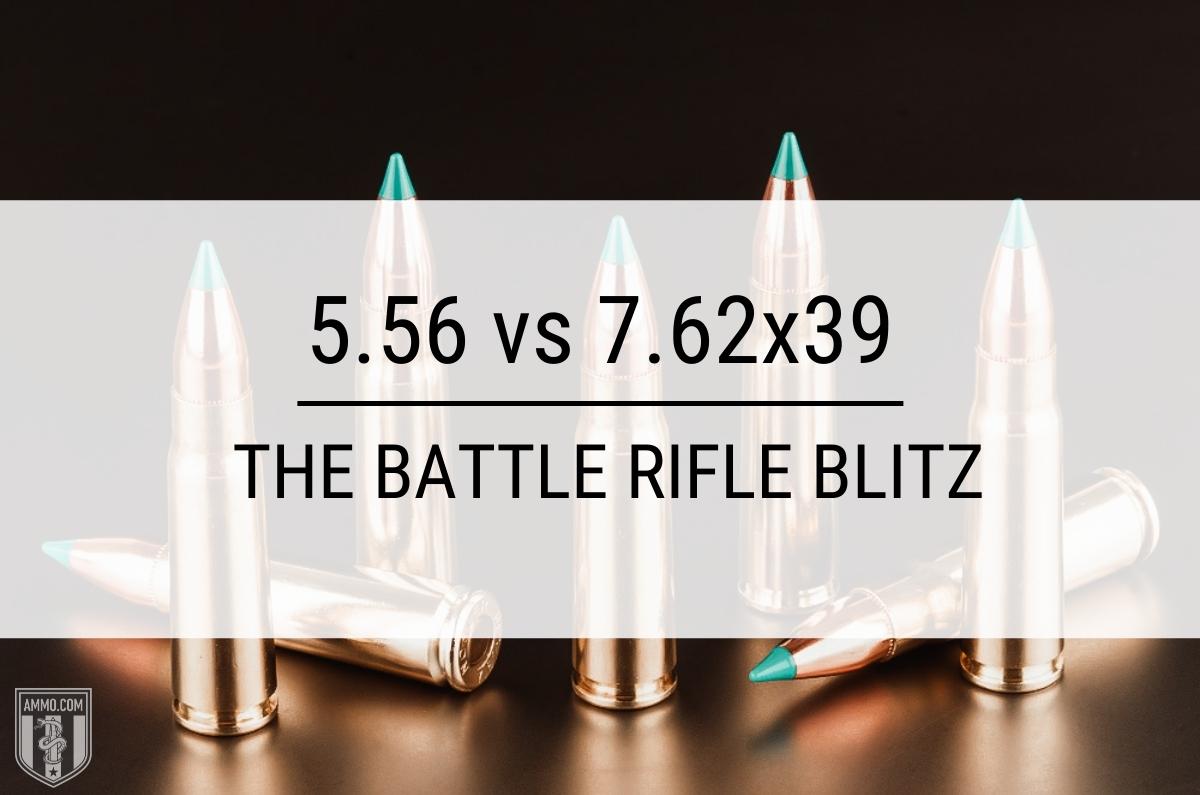 When it comes to selecting a semi-automatic rifle cartridge, the 5.56x45mm NATO and the 7.62x39mm are always front and center in the conversation.
When it comes to selecting a semi-automatic rifle cartridge, the 5.56x45mm NATO and the 7.62x39mm are always front and center in the conversation.
Both rifle rounds have been forged in the fires of battle from Vietnam, Iraq, and Afghanistan as well as a host of other conflicts across the globe. As a result, they are two of the most popular rifle cartridges on the planet.
Virtually every military on Earth uses one of these two rifle rounds for their primary battle rifle. And there’s a good reason for that! Their terminal ballistics and effectiveness in close quarters battle (CQB) are second to none.
But which rifle cartridge is better suited for you and does it matter?
Let’s take a closer look at the caliber debate that defined world conflict since the Cold War, the 5.56x45mm NATO vs 7.62x39mm.
A Note on Nomenclature: 223 Remington vs 5.56 NATO
Please note that within this article we will refer to the 223 Remington (223 Rem) and the 5.56x45mm NATO round interchangeably.
There are differences between the two and you can read about them HERE.
In short, a 223 Rem can safely be fired from a rifle or handgun chambered in 5.56, however, the opposite is not true.
5.56 vs 7.62x39: Let the Caliber Cold War Begin
Ever since the Vietnam War when the 5.56 and 7.62x39mm first squared off toe-to-toe, many militaries around the world have adopted one of these rifle cartridges as the chambering for their primary battle rifle. This has led many internet gun forums to delve into intense heated debates over the combat effectiveness and lethality of each round to determine which one is “best”. Most of these caliber debates come down to terminal ballistics, effective range, stopping power (ft-lbs), muzzle velocity (FPS), accuracy, and bullet weight.
In one camp, we have the 7.62x39 comrades with their AK-47 assault rifles, AKM variants, SKS rifles, and RPK machine guns. They tout the 7.62x39 as firing a heavier bullet that hits with the kinetic energy equivalent to Thor’s Hammer, superior barrier penetration, and enough stopping power to put a Siberian brown bear into permanent hibernation.
And in the other camp are the marksman of the 5.56 NATO cartridge with their beloved AR platform, M4 carbine, or bolt action varmint rifles. These shooters proclaim that “speed kills” and a lighter-weight bullet traveling at high muzzle velocity and higher pressure are preferred as they cause massive amounts of damage via hydrostatic shock. With a flatter trajectory and less recoil, the 5.56 shooters proudly boast of their sniper rifle accuracy over longer ranges than the slow and chunky 7.62x39 crowd could only dream of.
I hope you enjoyed some sarcasm there, but sadly this is what the caliber debate has come to in some forums.
The truth is that both rifle rounds are extremely effective in close-quarters battle and engagements at longer ranges, and this has been proven many times over in Iraq and Afghanistan. No matter which semi-automatic rifle cartridge you choose, it will not fail to deliver in any self-defense situation.
However, which ammo will be best for you is a deeper question that warrants a broader comparison of the 5.56 NATO round and the 7.62x39. Let’s begin by analyzing the Cartridge Specs for each.
Cartridge Specs
When evaluating two rifle rounds, it’s a good practice to look at the cartridge specs to see how they compare. And although the 5.56 and 7.62x39 couldn’t be more different from one another, there are some nuances that we can evaluate from the spec chart.
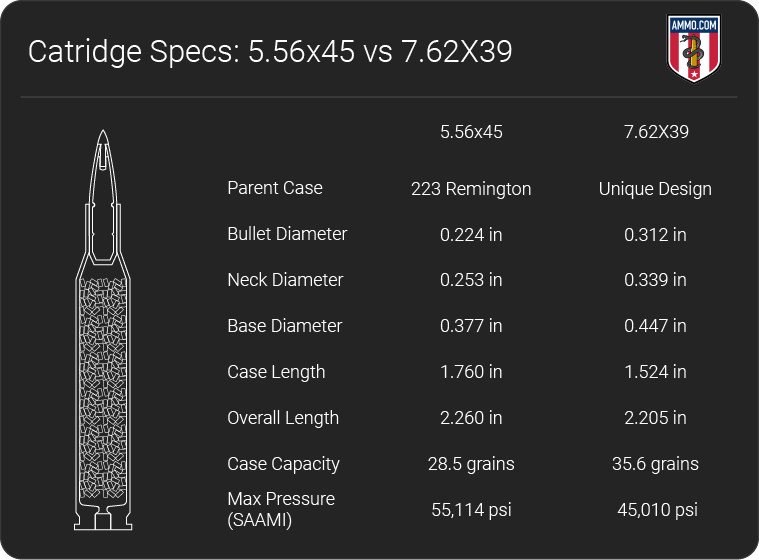
The first major difference is the bullet diameter each cartridge fires. The 5.56 fires a 0.224” diameter while the 7.62 fires a 0.312” diameter bullet.
This is one flaw in the Russian nomenclature that confuses some new shooters, as the 7.62x39 does not fire a 7.62mm (0.308”) diameter bullet like the 7.62x51 NATO (308 Winchester). Instead, it fires a 0.312” diameter bullet like the 303 British cartridge.
This lets us know that the 7.62x39 will likely be firing a heavier bullet at a lower muzzle velocity while the 5.56 will be firing a smaller bullet at a higher muzzle velocity (FPS).
The wider base diameter of the 7.62 allows for more case capacity than the 5.56, which is needed to push those heavier caliber bullets at an acceptable velocity to be effective at longer ranges. On the other hand, the 5.56 has a longer overall length as it is a thinner, longer case while the 7.62 is shorter and wider.
The last major difference is the maximum pressure. The 5.56 creates higher pressure in the chamber to reach those higher velocities needed to be combat effective, whereas the 7.62x39 can get by with lower pressures.
One note on the maximum pressures listed, the 5.56 NATO round is not registered with SAAMI, so the pressure limits listed are based on CIP data.
Now that we have a clearer understanding of the cartridge specs, let’s talk about recoil.
Recoil
Although both rifle rounds are becoming more popular in the hunting community, they are first and foremost frontline ammunition for combat troops. As such, having a round that has less recoil is preferred as it allows for faster follow-up shots during semi-automatic fire.
Both the 5.56 and 7.62 have very low recoil when compared to larger rounds like the 308 Winchester, 30-06 Springfield, and 7.62x54R.
Felt recoil is primarily a function of bullet weight, case capacity, and rifle weight. Therefore, a heavier bullet with a larger powder charge will recoil more than a lighter bullet with a lower powder charge.
A 7.62x39 will typically fire a 123 grain bullet while the 5.56 NATO cartridge will typically fire a 55 or 62 grain bullet (although heavier bullets can also be used).
Assuming a 7-pound rifle, the 7.62 will have approximately 8.5 ft-lbs of felt recoil compared to 5 ft-lbs of felt recoil for the 5.56 NATO round. And this is not overly surprising as the 5.56 is firing a considerably lighter bullet (albeit at higher muzzle velocity) than the 7.62x39.
Now it’s true that the 5.56 has less recoil, and this is preferred, but the recoil from the 7.62 is not oppressive by any stretch of the imagination. Shooters should not experience much of a recoil flinch from either round as they are both very pleasant to shoot.
Recoil is further mitigated in the AR platform due to the use of the buffer tube and recoil buffer to soften the reciprocation of the bolt carrier group (BCG) during firing. Many shooters who utilized the AR-15 describe it as having virtually zero recoil, which makes it a dream to shoot.
One major difference when it comes to recoil is the difference between semi-auto vs full-auto fire (AKA the happy switch). In the case of fully automatic fire, there is a noticeable difference between the two rifle rounds. The heavier recoil of the 7.62 will be more difficult to control during full auto when compared to the 5.56.
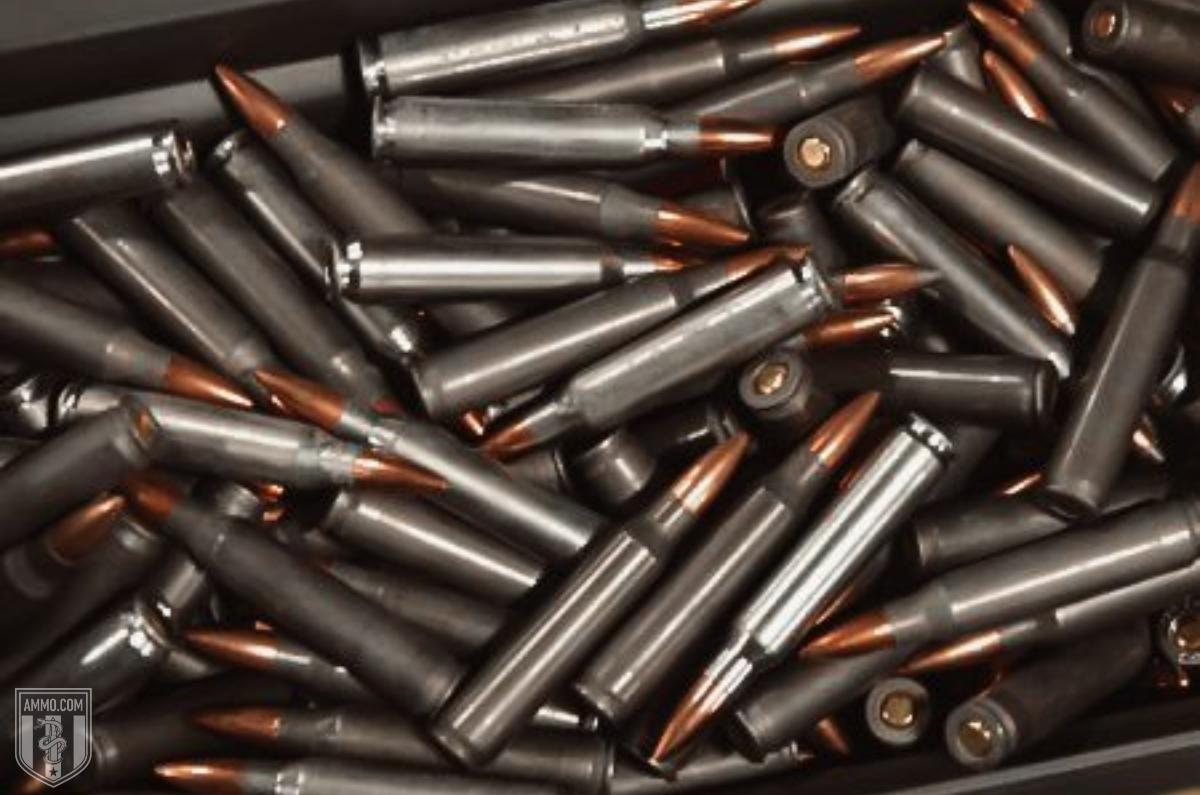
I know because I’ve shot both!
Now, for mounted machine guns or those using a bipod, such as the RPK or the M249 SAW, there will be little difference in full auto as the mount or bipod will help mitigate muzzle rise.
However, when it comes to muzzle rise while using an assault rifle, the M4 carbine and 5.56 NATO cartridge are easier to control.
The short-stroke gas piston, lack of a recoil buffer, and overall heavier recoiling round for the AK-47 lends itself to more muzzle rise during automatic fire. Although it’s not impossible to control the 7.62x39 in full auto, it takes more practice, training, and strength to keep the muzzle down compared to the M4 carbine and 5.56.
Trajectory
Trajectory is how we quantify a bullet’s flight path to its target measured in inches of bullet drop. A flatter trajectory is preferred as it requires less sight adjustment and provides a longer effective range.
Muzzle velocity can affect trajectory as well since a bullet that is moving at high velocity arrive at its target quicker and provide gravity less time to affect its flight path. And when it comes to muzzle velocity and trajectory, the 223 Rem leaves the 7.62x39 eating its dust.
Looking at the ballistics tables below, you can see how much flatter shooting the 5.56 is compared to the 7.62.
At 400 yards, you can see that the 62-grain bullet of the 5.56 NATO round has dropped about 23” while the 7.62x39 has plummeted over 44”. That’s virtually a 2-fold difference between the two rounds.
The 5.56 NATO cartridge was designed to be effective at long-range and short-range engagements, and the lightweight, super high-velocity 55gr and 62gr bullets used by the U.S. military are extremely effective at this.
Although the 7.62x39 can still be effective at range, it requires considerably more sight adjustment to account for the massive bullet drop the round experiences outside of 300 yards.
In terms of trajectory, the 5.56 NATO cartridge is undoubtedly the flatter shooting round.
Accuracy
The 7.62x39 has gotten somewhat of a bad rap as being an inaccurate round. Some of this is likely due to inconsistencies in the ammo itself and the rest is inherent to the AK platform specifically.
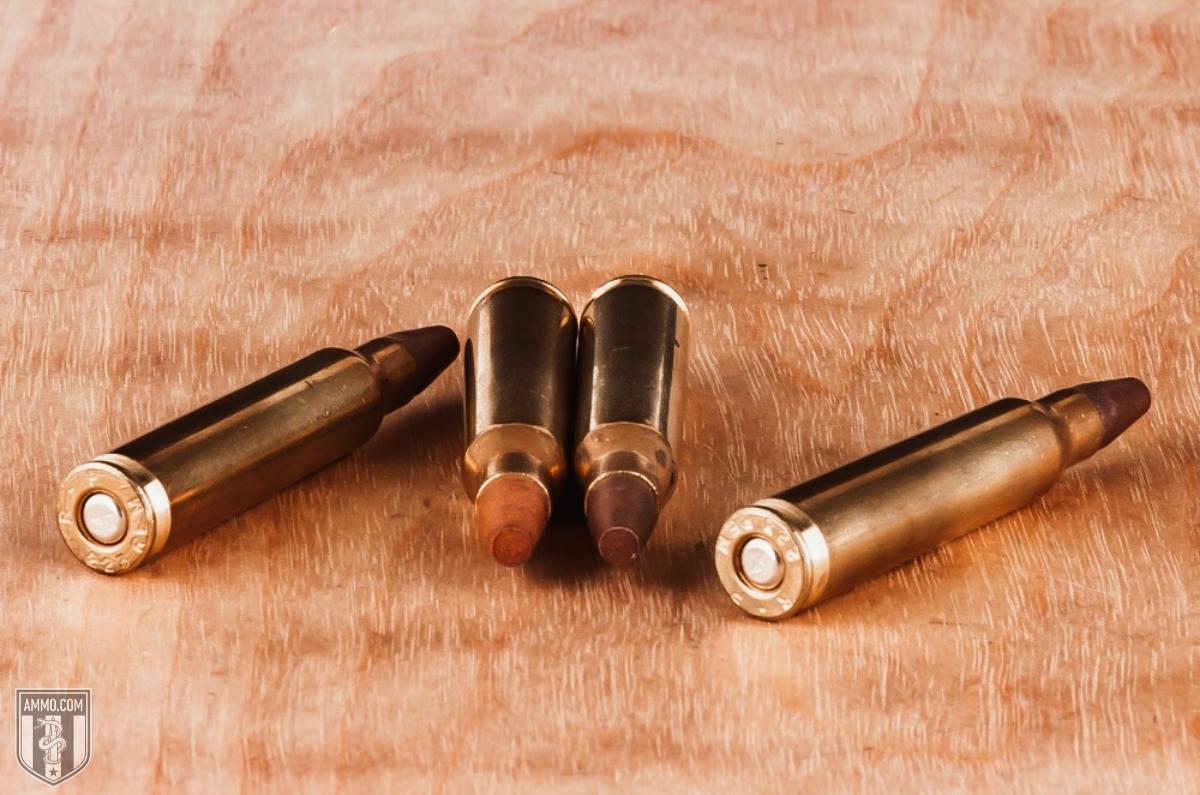
Former Communist Bloc manufacturing processes were not exactly ISO 9001 Certified if you catch my drift. Therefore, sometimes inconsistencies in powder charge or bullet seating depth of 7.62x39 ammo have been observed, and these differences between rounds will affect the point of impact. Reliability is always important in a battle rifle and the AK platform is known for its undying reliability. However, to achieve this the AK was designed with looser tolerances (especially in the chamber), and this often leads to decreased accuracy. Furthermore, the majority of 7.62 cartridges are steel cased, which does not allow the case to form to the chamber during firing.
To learn more about Steel Cased Ammo Click HERE.
But what about newly manufactured 7.62 ammo?
Newly produced 7.62x39 ammunition is considerably more consistent than its surplus predecessor from the spam can. However, most of your cheap steel-cased ammo is not going to be match grade, even the more expensive 7.62x39 will not compare with the consistency of 5.56 ammo. With optimized handloads for 7.62x39, I suspect that MOA level accuracy could be obtainable for a solid marksman. However, most off-the-shelf 5.56 cartridges will be more consistent and accurate than 7.62x39.
Ballistic Coefficient
Ballistic Coefficient (BC) is a numerical representation of how well a bullet resists wind and air resistance. It’s a measure of how aerodynamic a bullet is, a high BC is preferred and means the bullet will buck the wind easier. The way a BC is calculated is rather complicated and irrelevant for this article, however, heavier bullets will typically have a higher ballistic coefficient.You would then logically theorize that the 7.62x39 would dominate in terms of BC as it fires a heavier bullet…but this isn’t the case.
Bullet design also plays a role in the BC calculation, and the shorter/chunkier 0.312” diameter bullets used for 7.62 are not the most aerodynamic. As such, the 5.56 slightly edges out the 7.62 in terms of Ballistic Coefficient. On average, 5.56 will have a BC of 0.29 while the 7.62 sits at 0.27. It’s not a huge difference, but the 5.56 will be slightly more resistant to wind drift.
Sectional Density
Sectional Density (SD) is the measure of how well a bullet penetrates a target. This is extremely important when hunting big game, as you need a bullet that can punch through thick hide, bone, and sinew. Sectional density is calculated by comparing the bullet weight and the bullet diameter, the greater the number the more effective it will be at penetrating a target.
The greater the SD the deeper the bullet will penetrate the target. Although the 7.62x39 uses a heavier bullet weight, this does not correlate with an increase in SD as it is traveling at a slower FPS. In contrast, the 5.56 is moving at a higher FPS and concentrates all its force into a small area.
As such, the Sectional Density comparisons between 5.56 vs 7.62 are virtually identical.
Hunting
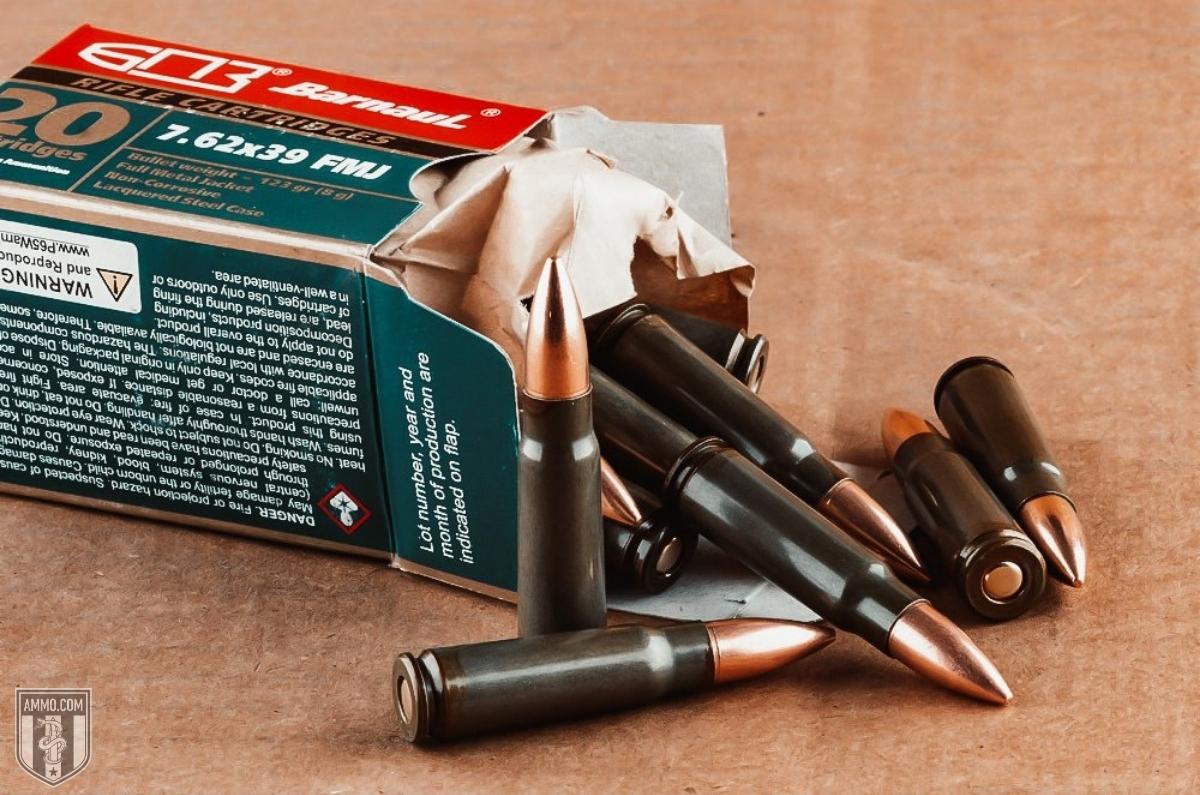
Although both rifle rounds were made for battle, they have both become popular as a hunting round as well. The 223 Remington/5.56 NATO has always been considered a varmint round and is extremely effective on small game like groundhogs, prairie dogs, coyotes, and foxes.
Although the 5.56 is an extremely effective round on two-legged varmints, it is typically not considered a proper round for whitetail. Many states and provinces in North America have a minimum bullet diameter allowed for deer hunting, and typically that bullet diameter is a minimum of 0.243” or higher. This keeps the 5.56 relegated to small game and varmint hunting only.
However, the 7.62x39 can step in as a hunting round that is appropriate for deer, feral hogs, and other medium-sized game. The 1500 ft-lbs of muzzle energy generated by the heavier 123-grain 7.62 bullet is more than enough to fall a deer out to around 150 yards. Hollow point and soft point ammo are currently available in 7.62x39 and provide appropriate terminal ballistics to humanely claim game.
However, many regions have regulations concerning hunting with semi-automatic rifles. Furthermore, the accuracy issues with some AK variants might also make it a less than ideal choice when picking a rifle to take into the woods. That is, of course, unless you want to pretend you are hunting the Viet-Hogs in the brush of the Mekong Delta…if that’s the case then strap up your SKS and go harvest that boar!
However, if you want to milk all the performance possible out of the 7.62 round, a bolt action rifle would be the best choice. In this case, the Ruger American Hunter or the CZ 527 are your primary rifle options.
To summarize, the 5.56 makes an excellent hunting round for varmints and small game with its lightweight bullets, long-range capability, and flatter trajectory. The 7.62x39 is an excellent choice for deer and medium-sized game under 150 yards provided you are using a proper hollow point or soft point bullet for added expansion.
Self Defense/Home Defense
When it comes to self-defense, there’s no denying that both rifle rounds will get the job done. This has been proven on the battlefield for well over 60 years and counting. The 7.62x39 is renowned for its stopping power as it delivers a punishing amount of kinetic energy into its target. In a short-range or CQB context, it’s hard to debate the terminal ballistics offered by the 7.62 are nothing short of spectacular. Therefore many ranchers and farmers will carry a 7.62 rifle like the Ruger Mini-30 or SKS in their truck to dispatch predators or defend their property.
In contrast, the 5.56 offers lower recoil, higher muzzle velocity, and a flatter trajectory at the cost of less muzzle energy. However, as most self-defense conflicts occur under 100 yards, this gives the advantage to the 7.62x39.
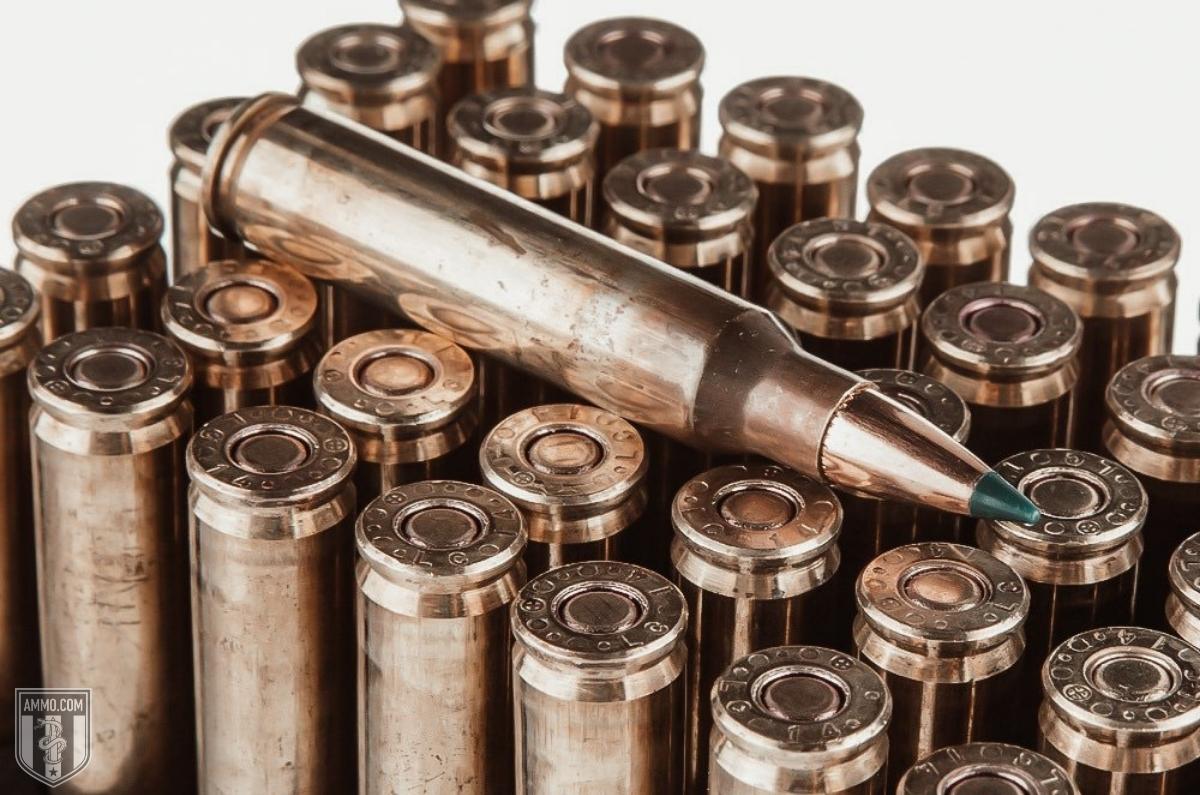
But let’s be honest about one thing, it’s unlikely that most of us will be packing our semi-automatic rifle in a self-defense situation unless you live in the country. Since the vast majority of CCW permit holders will be carrying a handgun when they are out in public, the question of home defense becomes a more pertinent question to answer for the 5.56 vs 7.62 debate. And one of the most important factors to discuss when talking about home defense is overpenetration. The absolute last thing any shooter wants is for their round to penetrate through the bad guy and into an innocent bystander.
The 7.62x39 gained quite a reputation in Vietnam for its ability to penetrate barriers and brush. For this reason, the 7.62 is not well suited for home defense. Modern home/apartment construction is notoriously flimsy and a 7.62x39 will have no issues blasting through sheetrock, vinyl siding, and into your neighbor’s unit or kitchen. Although the 5.56 offers a little less kinetic energy, it was developed to cavitate, tumble, and fragment when it entered soft tissue. This causes additional damage to the target and limits overpenetration.
Don’t get me wrong, the 5.56 can easily penetrate through drywall and siding like the 7.62, however, the lighter weight bullets fired by the 5.56 are easier to deflect and should over-penetrate less than the 7.62x39.
Ammo and Rifle Price and Availability
Although ammo prices have been trending up ever since the Coronavirus pandemic, 5.56 and 7.62x39 are still very affordable centerfire rifle rounds when compared to larger cartridges like the 308 Winchester.
When it comes to 5.56 ammo, you can purchase brass-cased or steel cased. We touched on steel-cased ammo earlier, but it is generally cheaper as the steel cases are easier to manufacture at a lower cost.
Check out our unbeatable prices on Winchester 5.56 ammo.
At the time of writing, steel-cased 5.56 55gr FMJ ammo can be had for about $0.55/round while brass-cased is sitting around $0.60/round if you buy in bulk. That’s not as huge a difference as it used to be, thanks to the Biden Russian Ammo Ban instated in August 2021.
Premium 5.56 rifle cartridges sporting ballistic tips, soft point bullets, or match grade hollow point bullets will generally run you about $1/round. For 7.62x39, long gone are the days of cheap spam cans full of Russian, Yugoslavian, or other Eastern European surplus FMJ ammo. At the time of writing, the cheapest steel cased 7.62x39 pierce your walled for about $0.38/round. Brass cased 7.62 ammo is also available, though it is almost 2 times more expensive, starting around $0.70/round.
As far as firearms are concerned, you have a plethora of options for both when it comes to semi-automatic rifles. You can purchase ARs, AKs, and SKSs in all different variations, colors, and configurations.
As far as prices, sadly they are also trending up just like ammunition. AK-47’s used to be extremely inexpensive and easy to come by, but now they command around a $600-$700 price point for most manufacturers.
Buying in bulk is always smart, make sure to check out our stock of .223 bulk ammo, 5.56 bulk ammo and bulk 7.62x39 ammo.
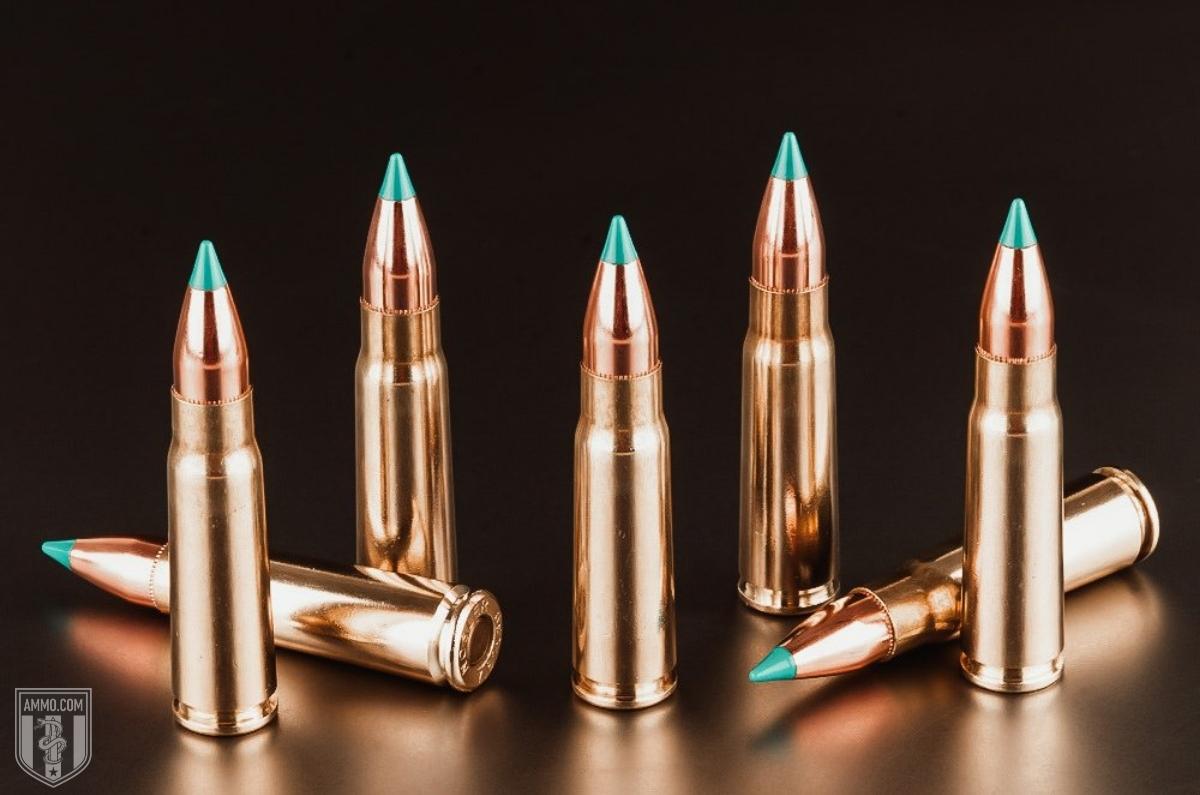
The same could be said for AR-15’s, as now they typically start around $700 and only go up from there depending on the manufacturer and add-ons you want. For bolt action rifles, the sky is the limit when it comes to 223 Remington/5.56 NATO. Multiple manufacturers offer bolt action rifles in 223 Rem as it is extremely popular with target shooters and varmint hunters. This is not the case with 7.62x39 and the round is only recently gaining popularity in the bolt action crowd. The Ruger American Hunter and CZ 527 are your only options for a bolt action 7.62x39 rifle currently.
Reloading
Reloading allows shooters to tailor their cartridges to meet their specific needs. You can adjust the muzzle velocity, muzzle energy, overall length, and bullet type to customize the perfect round for your rifle. The other main benefit of reloading is cost savings, as “rolling your own” is typically cheaper than buying factory new ammo. This is not the case when it comes to 7.62x39 though. As 0.312” diameter bullets are not overly plentiful and 7.62 brass cases are hard to come by, it is cheaper to shoot factory new steel-cased 7.62x39 ammo than it is to reload it.
On the other hand, 223 Rem brass is easy to come by and extremely cheap, as are 0.224” diameter bullets. Therefore, reloading for 223 Remington is very cost-effective and can easily lower your cost per round.
One thing to note that is sometimes confusing for those new to reloading, there are no exclusive 5.56 NATO dies on the market. As the case dimensions for 223 Rem and 5.56 NATO are the same, a 5.56 specific reloading die is not needed.
7.62x39 vs 5.56 Ballistics Tables
Our team here at Ammo.com has spent countless hours scouring manufacturer’s websites to compile the most extensive ballistics data for multiple loadings of 7.62 vs 5.56. Below you will find ballistics tables for each, comparing muzzle energy, muzzle velocity, and kinetic energy for multiple bullet weights.
7.62x39 Ballistics Tables
Note: This information comes from the manufacturer and is for informational purposes only. The actual ballistics obtained with your firearm can vary considerably from the advertised ballistics. Also, ballistics can vary from lot to lot with the same brand and type load.
| 7.62x39 Bullet WEIGHT | Muzzle VELOCITY (fps) | Muzzle ENERGY (ft. lbs.) | TRAJECTORY (in.) | |||||||||||
|---|---|---|---|---|---|---|---|---|---|---|---|---|---|---|
| Muzzle | 100 yds. | 200 yds. | 300 yds. | 400 yds. | Muzzle | 100 yds. | 200 yds. | 300 yds. | 400 yds. | 100 yds. | 200 yds. | 300 yds. | 400 yds. | |
| 123 Grain | 2360 | 2049 | 1764 | 1511 | 1296 | 1521 | 1147 | 850 | 623 | 459 | 3.4 | 0 | -14.7 | -44.7 |
| 123 Grain | 2300 | 2030 | 1780 | 1550 | 1350 | 1445 | 1125 | 860 | 655 | 500 | 2.5 | -2 | -17.5 | 0 |
| 125 Grain | 2300 | 2030 | 1780 | 1550 | 1350 | 1445 | 1125 | 860 | 655 | 500 | 2.5 | -2 | -17.5 | 0 |
5.56x45mm Ballistics: Chart of Average 5.56x45mm Ballistics
Note: This information comes from the manufacturer and is for informational purposes only. The actual ballistics obtained with your firearm can vary considerably from the advertised ballistics. Also, ballistics can vary from lot to lot with the same brand and type load.
| 5.56x45mm Bullet WEIGHT | Muzzle VELOCITY (fps) | Muzzle ENERGY (ft. lbs.) | TRAJECTORY (in.) | |||||||||||
|---|---|---|---|---|---|---|---|---|---|---|---|---|---|---|
| Muzzle | 100 yds. | 200 yds. | 300 yds. | 400 yds. | Muzzle | 100 yds. | 200 yds. | 300 yds. | 400 yds. | 100 yds. | 200 yds. | 300 yds. | 400 yds. | |
| 55 Grain NATO | 3130 | 2740 | 2382 | 2051 | 1750 | 1196 | 917 | 693 | 514 | 372 | 1.1 | 0 | -7.3 | -23 |
| 75 Grain NATO | 2910 | 2676 | 2543 | 2242 | 2041 | 1410 | 1192 | 1002 | 837 | 693 | 1.2 | 0 | -7 | -21 |
7.62x39 History: The Hammer of Lenin
In the later stages of WWII, the Nazi regime introduced a rifle that changed the way soldiers have waged ever since. The Sturmgewehr 44, or StG-44 for short, was a magazine-fed assault rifle capable of automatic fire utilizing lighter-weight bullets. The use of an intermediate cartridge allowed the StG-44 to be controllable during automatic fire, was more compact than the standard battle rifles of the time and were designed to hit targets several hundred yards away.
This flew in the face of the established battle rifles of World War II, namely the Russian bolt action Mosin Nagant and American semi-auto M1 Garand, that could hit targets well over 500 yards away even though most battles occurred at closer ranges. Both rifles were extremely effective, however, they weighed a ton, were difficult to maneuver at close range, and had heavy recoil making automatic fire difficult to control.
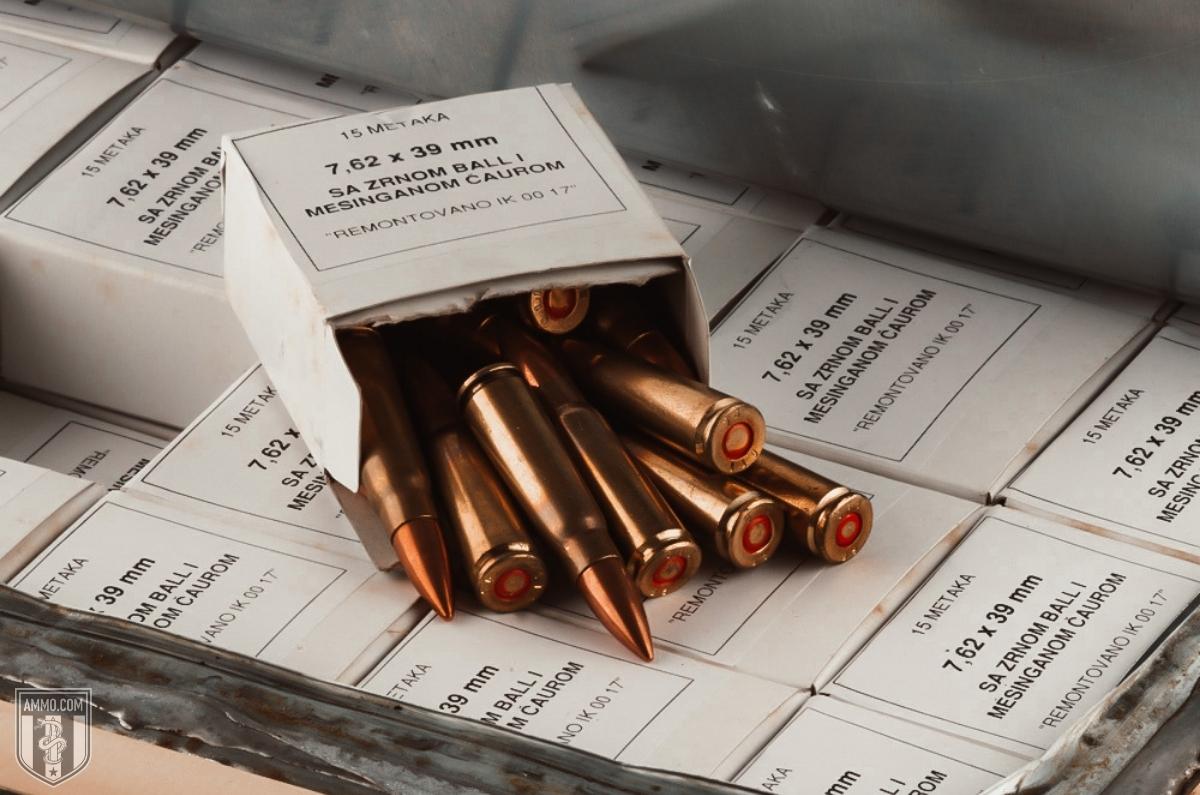
Seeing the effectiveness of the StG-44, the Soviet Union decided that they wanted to develop an intermediate cartridge for their new battle rifle. They wanted this rifle cartridge to be suitable for a host of firearms, from a semi-auto carbine for close range to fully automatic machine guns for suppressive fire.
Hundreds of unique cartridge designs were submitted but eventually, the Soviets settled on 57-N-231, which had cartridge dimensions of 7.62x41mm. The bullet that was used did not have a boat tail, as the Soviet cartridge designers assumed (incorrectly) that a boat tail was only needed for long-range shots. The assumption that all combat would be at close range led them to this decision as they did not expect shots to be taken at a longer distance.
However, after extensive testing, the Soviets determined that the boat tail increased close-range accuracy as well and a new bullet with a boat tail was adopted. This longer bullet required the cartridge case to be shortened to 39mm and the ubiquitous 7.62x39 was born. The 7.62x39 was adopted for the semi-automatic SKS and Mikhail Kalashnikov’s famous assault rifle, the AK-47. The Ak-47 became the most mass-produced military rifle in existence and the 7.62x39 has shared in its success. The RPD and RPK machine guns were also chambered in 7.62x39mm. The Russians designed 7.62x39 ammo to fire a 123 grain weight FMJ bullet with a muzzle velocity of 2,350 fps, 1,600 ft-lbs of muzzle energy, and a combat effective range of 400 yards. Typical bullet weights for 7.62 range between 120 to 125 grains.
With the popularity of the 7.62x39 on the rise, soft point (SP) hunting ammo has become more readily available for hunting whitetail and other medium-sized game animals. The 7.62x39 has seen combat on 5 continents and is truly one of the most prevalent and combat-effective rounds to come out of the Cold War.
5.56x45mm NATO History: The U.S. Military Answers the AK-47
After the Korean War, the U.S. Military started designing a new rifle cartridge for its frontline service rifles. And in 1954 the 308 Winchester (7.62x51mm NATO) was adopted to fill this role. However, after early engagements in Vietnam, the U.S. Army wanted a new rifle that fired a lighter, intermediate cartridge like the AK-47. This would allow their soldiers to carry more ammo into battle while maintaining powerful terminal ballistics to remain combat effective.This was the beginning of the 223 Remington.
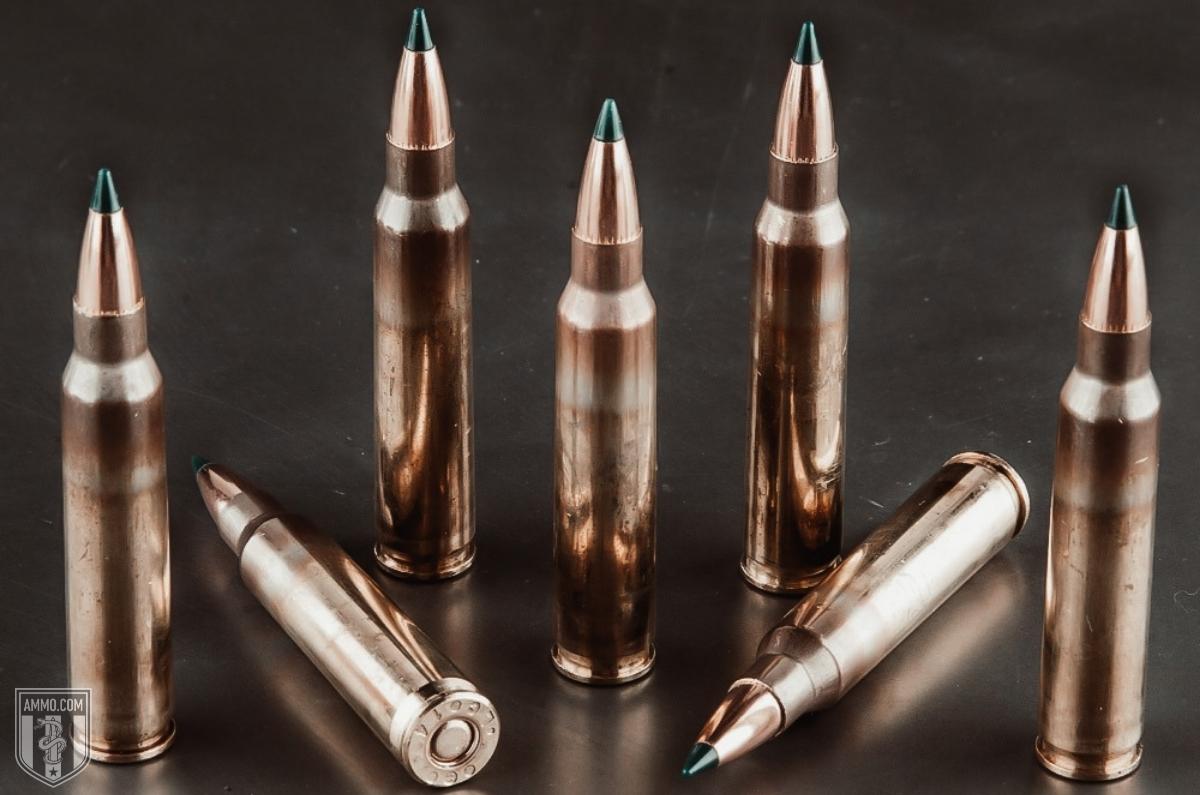
Development of the 223 Rem rifle round began in 1957 and the final design was submitted by Remington Arms to the Sporting Arms and Ammunition Manufacturers' Institute (SAAMI) in 1962. The development of the 223 Remington cartridge was a joint operation organized by the U.S. Continental Army Command between Fairchild Industries, Remington Arms, and Eugene Stoner of Armalite, using the 222 Remington as a parent cartridge. The original 223 Rem mil-spec ammo that the U.S. Military adopted was named M193, which fired a 55 gr full metal jacket (FMJ) bullet at a muzzle velocity of 3260 FPS with a muzzle energy of 1294 foot-pounds. The M193 cartridge served the U.S. Army through Vietnam, however, FN Herstal changed the game in the several years later.
In 1980, the Belgian firearms and cartridge manufacturer Fabrique Nationale (FN) Herstal submitted their designs for the SS109 5.56x45mm cartridge to NATO for approval. The SS109 fires a 62-grain FMJ bullet with a mild steel penetrator tip at 3,110 fps and has a muzzle energy of 1,325 ft-lbs.The U.S. Military designation for the 5.56mm NATO SS109 is the M855. The new 5.56mm NATO cartridge had identical external dimensions to the 223 Remington, however, the NATO cartridge can handle a higher maximum pressure.
Although, as with many things in life, sometimes the newer, shinier toy is not always the best. The adoption of the SS109 NATO round has come under some criticism due to battlefield reports of the ineffectiveness of the 5.56’s stopping power, accuracy, and effective range. This has led to several advancements in 5.56mm NATO ammunition. One of the biggest criticisms of the SS109 NATO cartridge was its inability to yaw (tumble) and fragment. The M193 was well known for tumbling and fragmenting upon entry into soft tissue, causing additional damage to the target.
The Mk 262 was the next iteration of the 5.56mm NATO round was one that fired a 77 gr OTM (open tip match) bullet designed for the Mk 12 SPR (squad precision rifle). Special Forces became fond of the MK 262 as it offered better terminal ballistics in the M4 carbines than what was observed with the SS109 NATO rounds. However, the Mk 262 was not adopted for widespread use due to the increased cost of heavier OTM bullets.
The Mk 318 was the next 5.56mm NATO cartridge evolution that used an open tip design to facilitate soft tissue damage and a solid brass penetrator base for added barrier penetration. This allows it to be employed against targets with or without body armor. Furthermore, the Mk 318 will fragment upon impact and is not dependent bullet yaw (tumbling) like the M193 and M855.
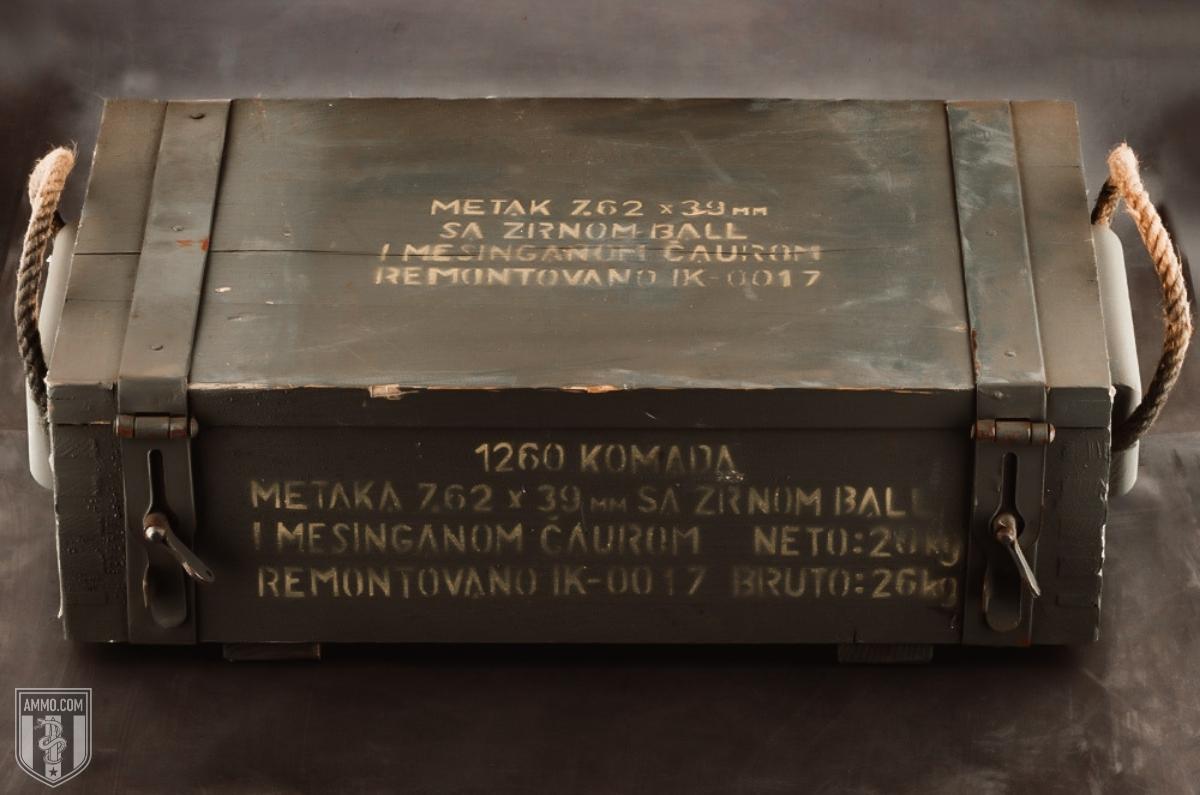
The most recent iteration of the 5.56mm NATO round is the M855A1 (ingenious naming, I know!) And the reason for its development is even more awe-inspiring to say the least. The M855A1 was developed because the U.S. Military wanted to go “greener” and move away from lead-core bullets. However, all environmental jokes aside, the M855A1 proved to have several distinct advantages over traditional M855 ammo. It was slightly more accurate, provided improved terminal ballistics and wounding capacity, as well as increased barrier penetration.
The M855A1 fires a 62 grain FMJ bullet with a solid copper core and steel penetrator tip extending past the jacket and has been in service since 2010.
Final Shots: 5.56 vs 7.62
When it comes to the caliber debate between 5.56 NATO and 7.62x39mm, it is unlikely that either rifle round will ever be crowned the victor.
The 7.62x39 is a hard-hitting cartridge that was designed to put a whole lot of lead into a target in a short period. Its punishing kinetic energy and terminal ballistics will make short work of any bad guy it comes across and its barrier penetration capabilities are excellent for an intermediate rifle cartridge. However, the 7.62 suffers from a poor trajectory as the less aerodynamic bullets hemorrhage FPS past 150 yards and limits the effective range of the round.
The 5.56x45mm NATO cartridge was designed with riflemen in mind as it is a very flat shooting cartridge that is effective at both short and long-range with low felt recoil. Its lightweight bullets operate under the concept that “speed kills” and cause massive amounts of internal damage via hydrostatic shock. However, 5.56 is somewhat prone to deflection when it encounters a foreign body en route to its target and lacks extensive barrier penetration abilities, although the M855A1 has somewhat mitigated this shortcoming.
Which round you choose is entirely up to you and your style of shooting and which weapon system you prefer, as the Russian ammo ban has closed the price gap between the 5.56 and the 7.62 considerably.
If you like the rugged durability of an AK-47 or the WWII, feel of an SKS, then go with the 7.62x39. However, if you prefer long-range accuracy and the modularity of the AR-15, then the 5.56 has your name on it.
No matter which cartridge you choose, make sure you are proficient with your rifle and that you stand ready against tyranny, should it ever pass over these hallowed lands again.
Ammo Comparisons
- .308 vs 5.56
- 6.5 Creedmoor vs .308
- .300 Blackout vs .308
- .300 Win Mag vs .308
- .243 vs .308
- .308 vs .30-06
- 7mm-08 vs .308
- .270 vs .308
- 7.62x39 vs .308
- .223 vs .308
- .338 Lapua vs .308
- .380 ACP vs 9mm
- .223 vs 5.56
- .300 Blackout vs 5.56
- 9mm vs 45 ACP
- 9mm vs 40 S&W
- .357 SIG vs 9mm
- 10mm vs 9mm
- 9mm vs 9mm Luger
- .243 vs .270
- .300 Win Mag vs .30-06
- .270 vs .30-06
- .40 vs .45
- 38 Special vs 357
- 9mm vs 40 vs 45
- 5.56 vs 7.62x39
- 338 Lapua vs .30-06
- .30-30 vs .30-06
- 300 PRC vs 338 Lapua
- .30-06 vs 7mm
- 300 Win Mag vs 338 Lapua
- 300 PRC vs 300 Win Mag
- 300 WSM vs 300 Win Mag
- 338 Win Mag vs 338 Lapua
- 12 Gauge vs 20 Gauge
- 10mm vs 357 Mag
- .30-30 vs 7.62x39
- 224 Valkyrie vs 22-250
- 17 HMR vs 22 Mag
- 7.62x39 vs .300 Blackout
- 45 ACP vs 45 Auto
- 45-70 vs 30-30
- 300 Blackout vs 223
- 357 Magnum vs 9mm
- 350 Legend vs 300 Blackout
- 224 Valkyrie vs 223
- 45 ACP vs 38 Super
- 6.5 Grendel vs .308
- 17 HMR vs 22 LR
- 10 Gauge vs 12 Gauge
- 22-250 vs 223
- 45 Colt vs 45 ACP
- 350 Legend vs 30-30
- 5.7x28 vs 223
- 5.7 vs 9mm
- 5.56 vs 5.7
- 22 vs 9mm
- Buckshot vs Birdshot
- 450 Bushmaster vs 308
- 450 Bushmaster vs 223
- Buckshot vs Slug
- 6.5 Grendel vs 5.56 vs 223
- 6mm ARC vs 6.5 Grendel
- 44 vs 45
- 458 SOCOM vs 5.56
- 357 vs 44
- 32 ACP vs 380
- 300 Win Mag vs 338 Win Mag vs 338 Lapua Mag
- 450 Bushmaster vs 458 SOCOM vs 50 Beowulf
- 6mm Creedmoor vs 6.5 Creedmoor
- TMJ vs FMJ
- 44 Special Vs 44 Magnum
- 45 90 vs 45 70
- 6.8 Western vs 6.8 SPC
- 50 Beowulf vs 50 BMG
- 26 Nosler vs 6.5 PRC
- 28 Gauge vs 410
- 6.8 SPC vs 5.56
- 6.8 SPC vs 6.5 Grendel
- 6.8 Western vs 7mm Rem Mag vs .28 Nosler
- 6.8 Western vs 6.5 Creedmoor
- 22 Hornet vs 223
- 6.8 Western vs 6.5 PRC
- .410 vs 12 Gauge
- .410 vs 20 Gauge
- 22 LR vs 22 Mag
- 6mm ARC vs 243
- 7mm-08 vs 270
- 243 vs 6.5 Creedmoor
- Nickel vs Brass Casing
- 204 Ruger vs 223
- 50 Beowulf vs 5.56
- 260 Remington vs 6.5 Creedmoor
- 6mm Remington vs 243
- 28 Nosler vs 300 PRC
- 50 Beowulf vs 50 AE
- 22 Nosler vs 22-250
- 450 Marlin vs 45-70
- 300 Win Mag vs 300 Norma
- 458 SOCOM vs 300 Blackout
- 38-55 vs 45-70
- 22 Hornet vs 22 LR
- 300 Norma vs 338 Lapua
- 338 Lapua vs 50 BMG
- 28 Nosler vs 300 Win Mag
- 28 Nosler vs 6.5 Creedmoor
- 204 vs 22-250
- 458 SOCOM vs 45 70
- 44 40 vs 45 70
- 6.8 SPC vs 6.5 Creedmoor
- 450 Bushmaster vs 30-06
- 7mm Rem Mag vs 300 Win Mag
- 30 Carbine vs 223
- 25-06 vs 30-06
- 26 Nosler vs 28 Nosler
- 16ga vs 12ga
- 30 06 vs 7.62 x54R
- 9mm Makarov vs 9mm Luger
- 350 Legend vs 223
- 30 Carbine vs 5.56
- 6.5x55 vs 6.5 Creedmoor
- 6.5 Creedmoor vs 270 vs 25-06
- M193 vs M855
- 450 Bushmaster vs 458 SOCOM
- 6.5 Grendel vs 6.5 Creedmoor
- 350 Legend vs 5.56
- .277 Fury vs 6.8 SPC
- 277 Fury vs 300 Win Mag
- 10mm vs .45 ACP
- 277 Fury vs 223
- 6.8 SPC vs 300 Blackout
- 6.5 PRC vs 6.5 Creedmoor
- 277 Fury vs 308
- 277 Fury vs 6.5 Creedmoor
- 350 Legend vs 450 Bushmaster
- 277 Fury Vs 5.56 NATO
- 10mm vs 40S&W
- 32 ACP vs 9mm
- 32 Special vs 9mm
- 8.6 Blackout vs 300 Blackout
- 30 Super Carry vs. 9mm
- 5.56 vs 9mm
- .50 Action Express vs 9mm
- 7.62x25 vs. 9mm
- 10mm vs 44 Magnum
- 300 Blackout vs 300 Win Mag
- 6.5 Grendel vs 300 Blackout
- 460 Rowland vs 10mm
- 300 RUM vs 300 PRC
- 300 Norma vs 300 PRC
- 45 GAP vs 45 ACP
- 7mm PRC vs 300 Win Mag
- 300 PRC vs 6.5 Creedmoor
- 300 PRC vs 308
- 357 SIG vs 357 Mag
- 7.62x39 vs 7.62x51
- 243 Win vs 223 Rem
- 30 Nosler vs 300 PRC
- 6.5 Creedmoor vs. 30-06 Springfield
- 450 S&W vs. 44 Magnum
- 6.5 Creedmoor vs. 300 Win Mag
- 454 Cassull vs. 45-70 Govt
- 454 Cassull vs. 44 Mag
- 7.62x54r vs. 308 Winchester
- 22 ARC vs. 223 Rem
- Subsonic vs. Supersonic Ammo
